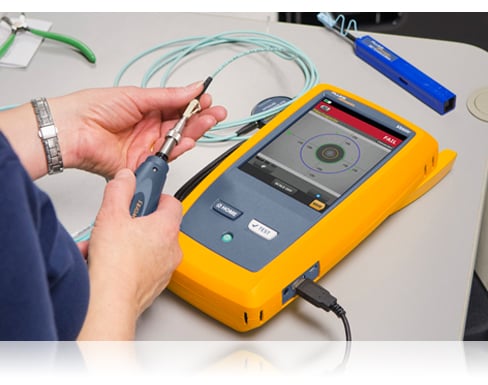All You Need to Understand About Robotic Vision and Its Applications in Advanced Optical Dimension Systems
Robotic vision stands for a significant innovation in the intersection of computer system vision, expert system, and artificial intelligence. This innovation enhances the precision of optical dimension systems, making it possible for real-time data analysis and boosted quality assurance. Its influence spans multiple fields, from manufacturing to health care. The developing landscape of robotic vision elevates inquiries regarding future capacities and applications. What innovations lie in advance in this transformative area?
Understanding Robotic Vision: Key Concepts and Technologies
Robotic vision incorporates the technologies and methods that make it possible for machines to interpret and recognize visual info from their atmosphere. This area incorporates components of computer system vision, artificial intelligence, and maker understanding to promote automated decision-making based on visual information. Key ideas include image processing, which involves the enhancement and analysis of images to extract meaningful features, and object recognition, which permits equipments to identify and classify objects within a scene.

The Assimilation of Robotic Vision With Optical Dimension Systems
As markets significantly demand precision and effectiveness, the assimilation of robotic vision with optical dimension systems has emerged as a transformative technique. This harmony allows robots to regard and translate their environments, boosting the capability of optical measurement systems to evaluate and examine things with unrivaled precision. By gearing up optical sensing units with innovative imaging modern technologies, robotic vision enables real-time data collection and processing, assisting in instant modifications to measurement criteria.
The mix encourages automated systems to identify variants in measurements, surface area high quality, and positioning, which are important in high quality control procedures. Improved formulas, such as artificial intelligence, more increase this combination by enhancing the systems' capability to adapt to various settings and situations. The integration not just simplifies dimension procedures but additionally lessens errors, making certain that items meet rigorous market requirements, thereby strengthening the role of robot vision in the future of optical measurement systems.
Applications of Robotic Vision in Production
In modern manufacturing settings, using vision systems has actually reinvented production procedures by enabling machines to execute tasks with remarkable accuracy and rate. Robotic vision systems are progressively employed for high quality control, where they examine items for problems and warranty adherence to specifications. These systems make use of video cameras and progressed formulas to analyze products in real-time, substantially decreasing the threat of human mistake.
Additionally, robot vision facilitates automation in assembly lines, permitting robots to precisely determine parts and assemble them with marginal downtime. This technology likewise boosts inventory management, as vision systems can keep track of supply degrees and find inconsistencies, assuring a smooth supply chain.
Furthermore, robot vision help in the implementation of wise manufacturing facilities, where information from vision systems can be incorporated with other modern technologies to optimize workflows. Overall, the applications of robotic vision in making show its critical role in enhancing effectiveness, high quality, and efficiency throughout numerous sectors
Robotic Vision in Healthcare: Revolutionizing Client Care

In rehabilitation, robot vision aids in checking client progression and tailoring treatment sessions to individual requirements. It sustains medical specialists by automating tasks such as data collection and fibre testing equipment person monitoring, permitting for more time to concentrate on straight patient communication. In addition, robotic vision improves telemedicine by making it possible for remote diagnosis and digital consultations, connecting the void in between patients and doctor. Overall, the application of robot vision in medical care is revolutionizing patient care, causing improved end results, efficiency, and individual contentment.
Future Trends and Developments in Robotic Vision Innovation
The fast advancement of robot vision modern technology promises to even more improve its applications across different fields, including healthcare. Future trends indicate a significant shift towards incorporating artificial knowledge and equipment learning, enabling systems to pick up from vast datasets and improve precision with time. Boosted sensor modern technologies and deep learning formulas are anticipated to fine-tune item recognition capabilities, allowing robotics to analyze complicated atmospheres much more efficiently.

The combination of increased fact (AR) with robot vision will likely transform how robotics aid in surgical procedures and diagnostics. This harmony will facilitate real-time information visualization, improving decision-making processes. Additionally, miniaturization of parts will lead to even more small and functional robot vision systems suitable for a selection of jobs. As these developments unravel, markets will witness boosted automation and efficiency, strengthening robot vision as a foundation of cutting-edge technological solutions.
Often Asked Questions
What Are the Key Components of a Robot Vision System?
The main parts of a robotic vision system consist of video cameras for photo capture, processors for information evaluation, formulas for interpretation, and actuators for movement. With each other, these aspects make it possible for robots to regard and connect with their setting successfully.
Just How Does Robotic Vision Improve Accuracy in Measurements?
Robotic vision improves dimension accuracy by using innovative imaging innovations, enabling specific things detection and spatial analysis. This ability reduces human error, enhances repeatability, and permits real-time adjustments, eventually boosting overall measurement dependability and performance.
What Industries Advantage The Majority Of From Robotic Vision Modern Technology?
Numerous sectors profit substantially from robotic vision technology, including manufacturing, healthcare, farming, and logistics. These fields make use of enhanced accuracy, performance, and automation, leading to improved productivity and lowered functional expenses in their particular processes.
Can Robotic Vision Systems Work in Low-Light Conditions?
Robotic vision systems can undoubtedly work in low-light conditions, utilizing advanced sensors and formulas to improve image clarity. This capacity enables them to carry out successfully in different environments, consisting of commercial and monitoring applications, despite having marginal lighting.
What Are the Prices Related To Implementing Robotic Vision?
The prices connected with executing robot vision differ considerably, affected by elements such as cams, software application, and combination. Extra expenditures consist of upkeep, training workers, and potential upgrades to existing systems, which can gather gradually.